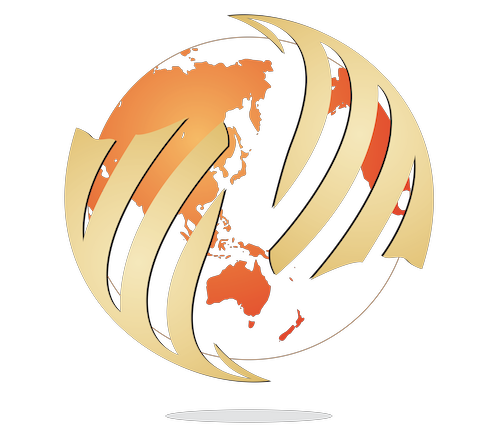Clean water is arguably the most important resource we have. We need it to survive as it is used to grow food, keep ourselves and our spaces clean, helps to prevent the spread of disease and the degradation of our ecosystems. It is important to recognise its role in the quality of life that everyone wishes to have. What many people may view as trivial, is crucially important to others in places around the world where they lack accessibility to sustainable and clean sanitary water. Currently, a growing interest in investing with intention has led to many leaders in the financial world strive to generate positive social and environmental impact for every dollar invested. Investing in water and sanitation in Australia is something that should be taken more seriously. Many Australian communities that live within rural areas suffer from drought caused by global warming and the over irrigation of natural water sources, preventing them from having access to clean water.
The most extreme example of where Australia’s water resources have been affects by environmental shifts and human activity is the Murray-Darling Basin. As a water system it reaches all corners of Australia. Thus, it’s impact on Australia’s society and environment is profound. With 77,000 km of rivers, it is Australia’s largest and most complex river system. Which makes it one of the most important water systems in Australia. It holds roughly 34,000 GL of water, which contributes to the hydration of fauna, flora and dependent communities throughout South Australia, Victoria, New South Whales and Queensland. The basin is of significant environmental, cultural and economic value to Australia. It’s home to 16 international significant wetlands, of which holds 35 endangered species and 98 difference species of waterbirds. More than 2.2 million people live along the Basin, including 40 different communities of Indigenous Australians. On an Annual basis the Basin attracts visitors from around the world, with tourism earning around $8 billion each year. Along with 40% of Australia’s agricultural produce comes from the basin, including 100% of our rice, 80% of our grapes and 28% of our dairy.
More than 2.2 million people live along the Basin, including 40 different communities of Indigenous Australians. Which makes it one of the most important water systems in Australia.
Although due to pressures put on the basin ecosystem many travesties have befallen it. Draught, blue-green algae leading to fish kills in the millions. These have cased ecological problems on top of the now endangered list of aquatic life. The desertification of the basin has also led to a higher likelihood of bushfires. The devastating bushfire season has been the worst Australia has ever seen with more than 40% of the bush burned with an estimated 3.14m hectares within national parks. The bushfire season in 2019-2020 is estimated to have released 830m tonnes of carbon dioxide into the atmosphere. Not to mention the roughly 1 billion animals that were killed during the fires and 2,439 homes were destroyed. Desertification can be a devastating thing, and it is all a result of draught, gleyed soil and low infiltration rates causing limited natural water supply.
This lack of water, let alone clean drinking and washing water, has impacted the overall health of the bush. This unclean nature of the water has meant that parents in communities surrounding the basin have been forced to wash their clothing, water their plants and even wash their children in donated bottles of water as the state of the darling has left it unusable without consequences. An ABC report shows how simply watering one’s plants with the water from the basin will kill them. Due to these conditions the scope of opportunity in Australia is large. Agricultural and Indigenous communities in need of clean water would benefit greatly from the ability to access clean water. Through the pandemic it has been advised that people’s hands be washed more frequently, yet 3 billion people, 40% of the world’s population, lack access to basic hand-washing facilities in their homes. This is also evident in the communities that surround the Murray-Darling Basin.
This is another reason why Wealth of Nations Advisor’s “Impact Investing Portfolio (IIP)” have looked to expand its initial Alternatives Portfolio 3 years ago to include Impact Investing. As a firm we have come to believe and resonate with the concept that there cannot be jobs or financial return on a dead planet. A slogan fortified by the International Trade Union Confederation. This is why we look to invest and promote companies such as WaterEquity in Australia and New Zealand, whose mission is to build a global capital market that accelerates universal access to water and sanitation. Its aim to serve two constituencies: low-income communities who needs access to water and sanitation, and investors who want to deliver impact and earn returns. This model and vision was embedded as COVID-19 spread in 2020, which made both parties realise that water access is a crucial front-line defence against the virus as well as other diseases.
In the process of finding a solution we can see that Impact investing has come to the front of providing measurable social and environmental change in the world. It has grown both in its influence and its innovation. Many high-net-worth individuals (HNWI+) and Superannuation funds have pledged their capital to go towards investing with intention. By doing this they will have a quantifiable ability to create lasting social and environmental change. Their investments will often go towards Impact investment funds. Who will reinvest that capital into opportunities that align with their appropriate United Nations Sustainable Development Goals’. As a company we at Wealth of Nations Advisors focus our attention on finding managers that create unique and necessary solutions to social and environmental problems alongside a financial return. By growing our Impact Managers knowledge of water and sanitation investment opportunities in emerging markets to drive sustainable change and understanding their methodology is something we believe Australia could adopt and utilise to better serve the communities surrounding the Murray-Darling Basin. In turn, boosting the economy through assisting agriculture and also helping to benefit the health and wellbeing of the communities in need.
Reference:
- Analysis & Policy Observatory. (2019). Murray-Darling Basin Royal Commission report. https://apo.org.au/node/217606
- Cheshire, B. (2019, May 6). The Darling of Menindee. ABC New. https://www.abc.net.au/news/2019-05-06/menindee-four-months-on-from-mass-fish-kill/10998562?nw=0
- Chan, G. (2017, August 4). NSW minister gives himself power to approve illegal water works in Murray-Darling Basin. The Guardian. https://www.theguardian.com/australia-news/2017/aug/04/nsw-minister-gives-himself-power-to-approve-illegal-water-works-in-murray-darling-basin
- Chan, G. (2017, July 25). Murray-Darling basin: allegations of water theft spark calls for judicial inquiry. The Guardian. https://www.theguardian.com/australia-news/2017/jul/25/murray-darling-basin-allegations-of-water-theft-spark-calls-for-judicial-inquiry
- Davies, A. (2021, March 17). $13m mistake: valuer says $80m water buyback price was not in line with its advice. The Guardian. https://www.theguardian.com/australia-news/2021/mar/17/valuer-tells-auditor-general-water-buyback-price-was-not-in-line-with-its-advice
- Department of Agriculture, Water and the Environment. (2020). Sustainable Diversion Limit (SDL) adjustment mechanism and its implementation. https://www.agriculture.gov.au/water/mdb/policy/sdl-adjustment-mechanism
- Department of Agriculture, Water and the Environment. (2020). Australian Government Response to the final report of the Independent Assessment of the 2018-19 Deaths in the Lower Darling the Vertessy Report). https://www.awe.gov.au/about/reporting/obligations/government-responses/vertessy-report
- Department of Agriculture, Water and the Environment. (2020). Murray-Darling Basin policy. https://www.agriculture.gov.au/water/mdb/policy
- Hasham, N. (2019, April 24). What are water buybacks and how did we get here?. The Sydney Morning Herald. https://www.smh.com.au/politics/federal/what-are-water-buybacks-and-how-did-we-get-here-20190423-p51gla.html
- Kirby, M., Bark, R., Connor, J., Ejaz Qureshi, M., Keyworth, S. (2014). Sustainable irrigation: How did irrigated agriculture in Australia’s Murray-Darling Basin adapt in the Millennium Drought? Agriculture Water Management, 145(1), 154-162. https://doi.org/10.1016/j.agwat.2014.02.013
- McSweeney, R. (2019). Explainer: ‘Desertification’ and the role of climate change. CarbonBrief. https://www.carbonbrief.org/explainer-desertification-and-the-role-of-climate-change
- Morton, A. (2020, April 21). Summer’s bushfires released more carbon dioxide than Australia does in a year. The Guardian. https://www.theguardian.com/australia-news/2020/apr/21/summers-bushfires-released-more-carbon-dioxide-than-australia-does-in-a-year
- Murray-Darling Basin Authority. (2020). A plan for the Murray-Darling Basin. https://www.mdba.gov.au/basin-plan/plan-murray-darling-basin
- Murray-Darling Basin Authority. (2020). Governance of water management in the Murray-Darling Basin. https://www.mdba.gov.au/about-us/governance-water-management-murray-darling-basin
- Murray-Darling Basin Authority. (2019). Prerequisite policy measures. https://www.mdba.gov.au/publications/mdba-reports/prerequisite-policy-measures
- New South Whales State Government. (2017). Floodplain Management Plan for the Barwon-Darling Valley Floodplain 2017. https://legislation.nsw.gov.au/view/pdf/asmade/sl-2017-328
- Ombudsman NSW. (2018). Water: compliance and enforcement. https://www.ombo.nsw.gov.au/__data/assets/pdf_file/0006/57903/Water-compliance-and-enforcement-a-special-report.pdf
- Parliament of Australia. (2018). Murray-Darling Basin management. https://www.aph.gov.au/About_Parliament/Parliamentary_Departments/Parliamentary_Library/pubs/BriefingBook44p/MurryDarlingBasin
- Quiggin, J. (2019, July 9). The Murray-Darling Basin scandal: economists have seen it coming for decades. The Conversation. https://theconversation.com/the-murray-darling-basin-scandal-economists-have-seen-it-coming-for-decades-119989
- Reese, A. (2001). What’s Behind Desertification?. PRB. https://www.prb.org/whatsbehinddesertification/
- Thackray, L., Condon, M. (2021, April 22). New report finds two-thirds of irrigators non-compliant with new water law. ABC News. https://www.abc.net.au/news/rural/2021-04-22/irrigator-compliance-concerns/100086068
- The Australian Institute. (2019). PM blames drought, but there’s been over 100 cases of maladministration in Murray Darling in less than one year. https://australiainstitute.org.au/post/pm-blames-drought-but-theres-been-over-100-cases-of-maladministration-in-murray-darling-in-less-than-one-year/
- United Nations. (1990). Policy Issues in Irrigated Agriculture. http://www.fao.org/3/t0800e/t0800e0d.htm
- United Nations. (2006). Policy Highlights Irrigation and Water Management. http://www.fao.org/3/am365e/am365e.pdf
- Water Equity 2020 Annual Report.
https://waterequity.org/wp-content/uploads/2021/06/2020-Annual-Report.pdf









